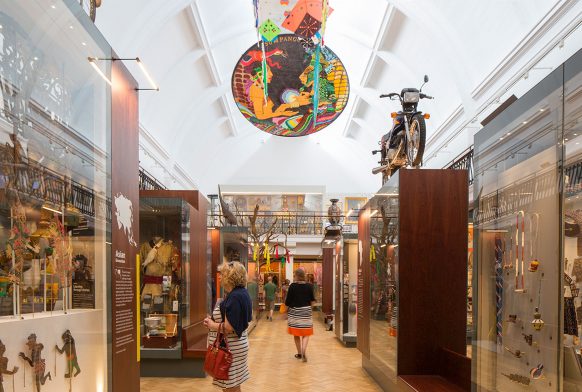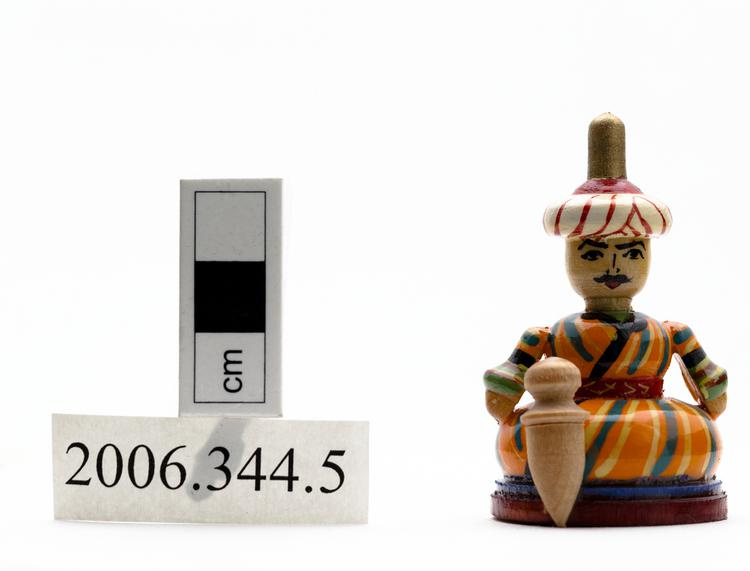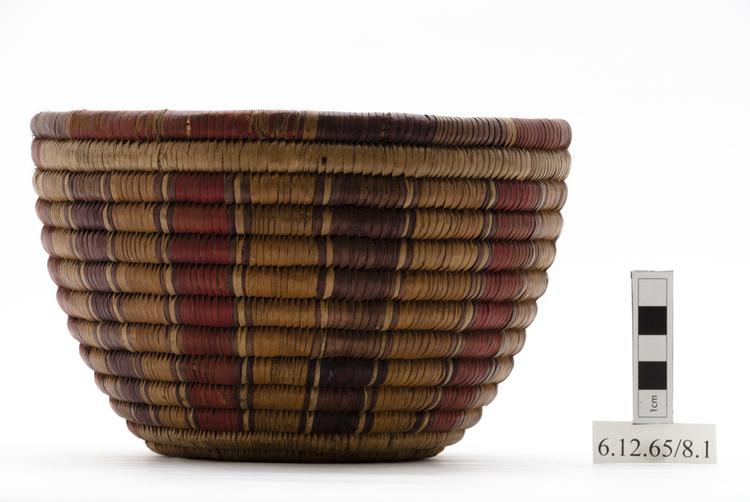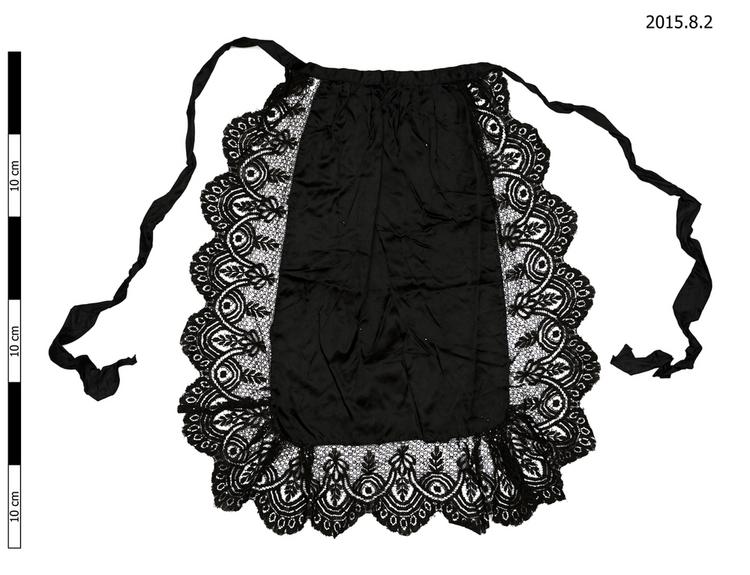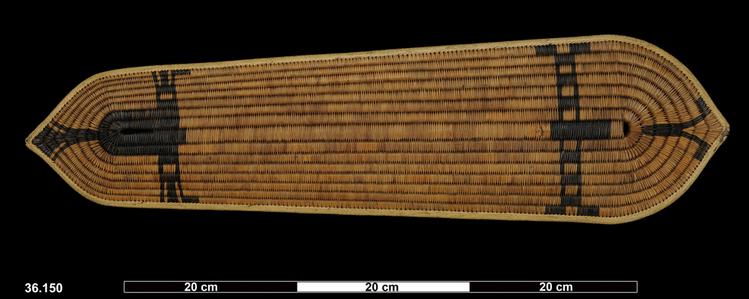
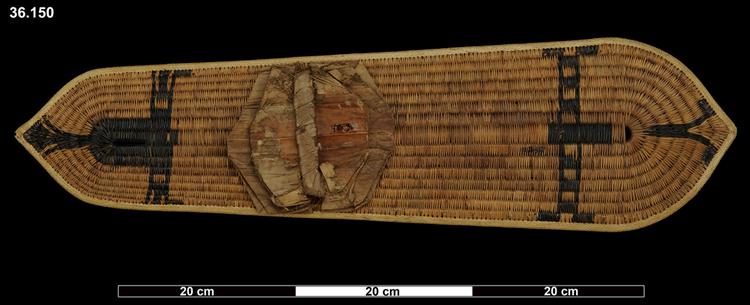
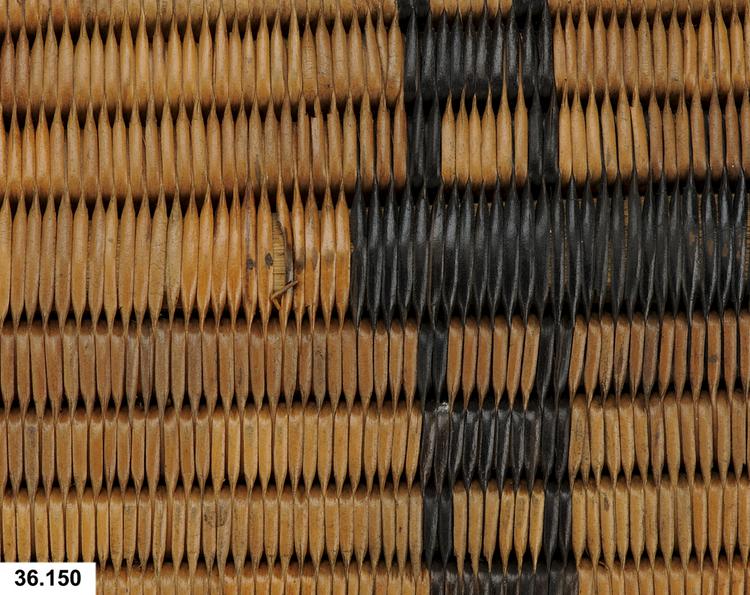
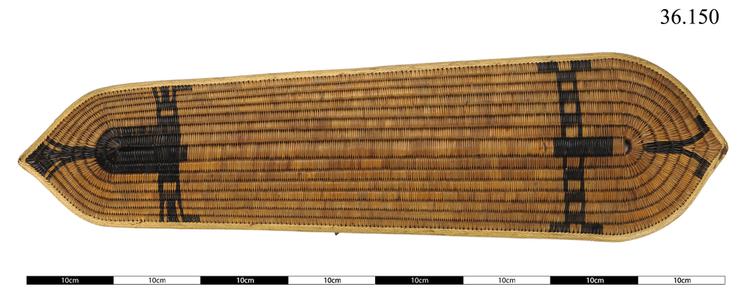
Basketry shield of elongated and pointed teardrop shape. The shield is woven in three colours; a natural rolled leaf, possibly Pandanus, with a paler border woven into a chevron design and three separate areas of black pandanus fibre woven into the central body. The black design is highly abstract on this example but others show it to be abstracted elements of a human figure. The arms legs and head dress are still identifiable.
Basketry Shield, Reoreo, Collected on Bugotu, Solomon Islands, Central Melanesia Although most discussion of Solomon Islands shields has focused on the twenty or so shell-inlaid examples, the overwhelming majority in museum collections are more functional examples in plain basketry. It may seem strange to imagine choosing to make a shield of basketry as a defence against steel-bladed war axes or bone-barbed spears, but this unusual kind of shield is designed to absorb a blow and become entangled with the attacker’s weapon. An axe or spear striking such a shield cut easily into the shield’s basketry core, but became tangled up in its coiled fibres. In this way, the attacker was disarmed or distracted, and left open to an easy counter-attack. Shields of this kind were to be found throughout the central Solomon Islands, and this particular example was purchased on Bugotu, where such objects were termed reoreo. They were generally made in the interior of Guadalcanal, however, and traded outwards from there. In its elliptical shape and very abstract scheme of decoration portraying a human figure, the reoreo has few parallels in other Pacific cultures. Its closest similarity is perhaps the vayola shields of the Massim region in Papua New Guinea. Vegetable fibre, pigment. Late 19th Century. Sold to the Horniman Museum in 1936 by a Mrs Bellamy.
fighting



